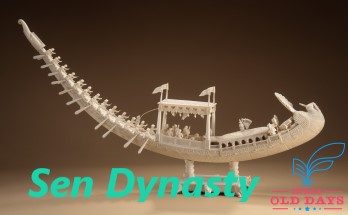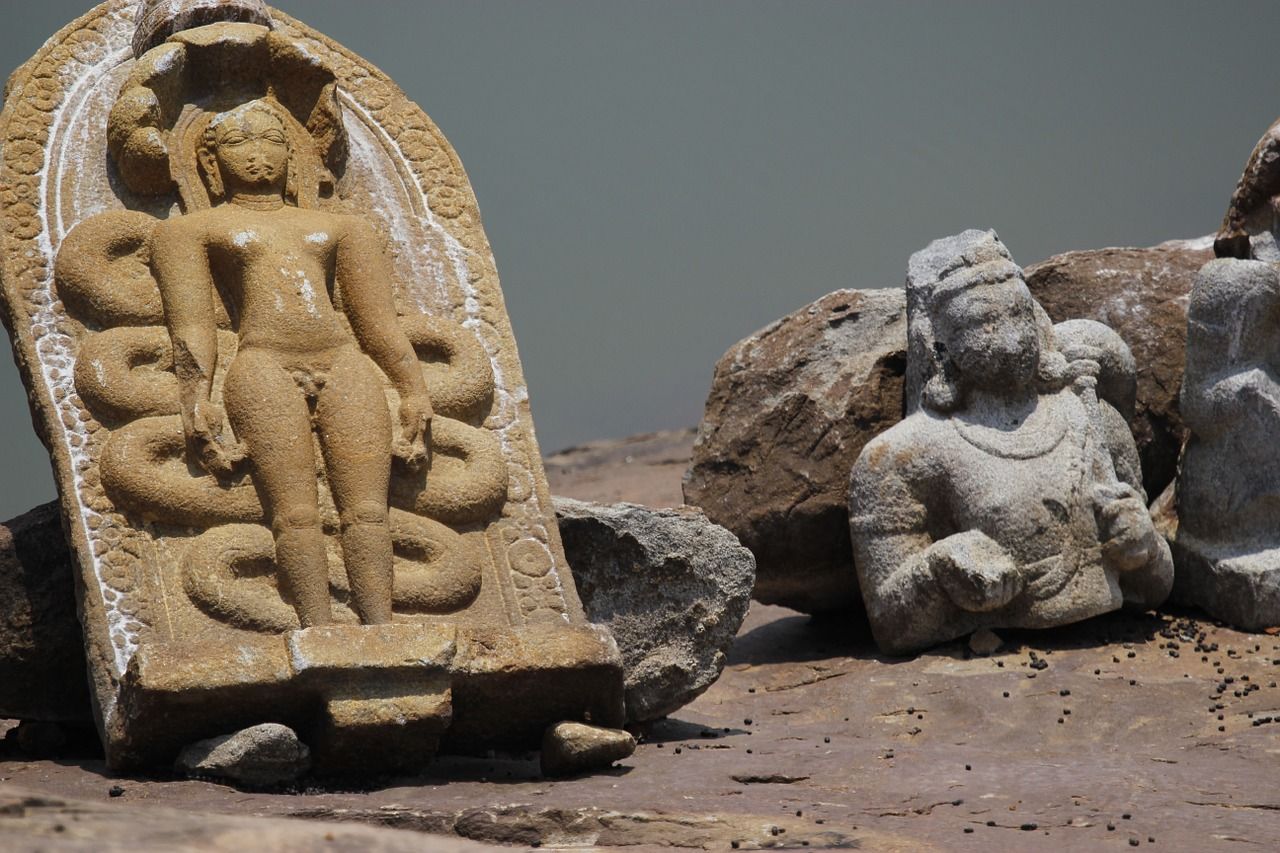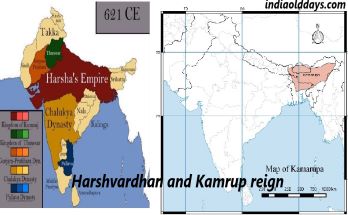Religious literature of ancient India

Religious literature-
Religious literature is also divided into two parts-
- Brahmin literature
- Brahmantra literature
Brahmin literature-
In Brahman literature, Vedas, Brahman Granth, Aranyak, Upanishad, Vedanga, Sutras, Epics, Smriti Gramas, Puranas etc. come.
Veda
The oldest scripture in the Brahmin literature is Rigveda. Religious, social, economic and political life of the ancient Aryans is introduced by Rig Veda. The latter Ved is Atharva Veda.
Number of Vedas is four
- Rig Veda
- Yajurveda
- Samaveda
- Atharva Veda
“The collective form of the four Vedas is called the Sanhita.”
1.Rig Veda-
- The Vedas are the most important Vedas of Rigveda.
- The collection of the orderly knowledge of the borrowers is called Rig Veda.
- There are two Brahmin books of Rig Veda – Atereya and Kaushitaki (Shakhayan).
- It has 10 mandls, 1028 scrips and 10,462,rchaen.
2.Yajurveda-
- The compilation of rules for recitation of chants and sacrifices during recitation is called Yajurveda.
- Its reader is called adhvaryu.
- This Veda is in Gadya – Padya.
- There are two parts of Yajurveda – Shukla Yajurveda and Krishna Yajurveda.
- The Yajurveda has two Brahmanical texts- Sathpath and Taitriya.
3.Samaveda-
- Samaveda is also called a collection of songs.
- Samved is called the father of Indian music.
- Its reader is called Udrata.
- Samaveda is a compilation of the debt that can be sung.
- The Brahmin text of Samaveda is a panchvish.
4.Atharva Veda-
- In this Vedic mantra associated with various topics such as disease, prevention, mechanism, magic, sorcery, cursing, vandalism, blessings, praise, atonement, medicine, research, marriage, love, rajakarma, motherland-greatness etc.
- In the Vedas, Beliefs, blind faiths etc. are described.
- The author or the sage is believed to be the author of this Vedas.
- In Atharvaveda, the meeting and committee are said to be two daughters of Prajapati.
- Atharvaveda condemns the birth of girls.
- Brahman Granth Gupth of Atharva Veda is Brahman Granth.
Brahman Granth-
- Granth Brahmin Granth is said to be rendering the subjects of Yajna.
- There are rules of coronation and some ancient kings in the Atreya Brahmin.
- The mention of Gandhara, Sarala, Kaikey, Kuru, Panchal, Koshal and Videha kings in the Satpath Brahmin.
Aranyak-
- Aranyak is the last part of the Brahmin Granth, in which there is a description of philosophical and mysterious subjects.
- Aaranya reflects the side of thoughtful knowledge and due to being read in the forest, they are called Aranyak.
- Aaranya reflects the side of thought-provoking knowledge. Because of being read in the forest, he received the name of aerial name.
Aranyak is a total of 7 –
- Aitareya
- Shankhan
- Taittiriy
- Maitrayani
- Madhyandina
- Talvakar
- Chhandogya
Upanishad –
Upanishads complement the Aranyans and are the main source of Indian philosophy. Being the last part of Vedic literature, they are also called Vedanta.
- Upanishads are the compositions of the uttar vaidik period.
- The Upanishads get information about the philosophical ideas of the Aryans. They are also called pedagogy or spirituality.
- The Upanishads get the concept of soul, divine, and rebirth.
Total number of Upanishads is 108 but the authentic Upanishad is 12.
- Ish
- Ken
- kanth
- prashn
- mundak
- Mandukya
- Taittiriy
- Aitareya
- Chandogy
- kausitaki
- Barahadaranyak
- Svetashwatr
India’s National motto “Satyamev Jayate” has been taken from Mundak Upanishad.
Vedang 6 are:
- Education
- kalp
- Grammer
- Nirukta
- jyotish
- chhand
- Vedang has been written as formula.
- Formula literature emerged to keep Vedic literature inaccessible.
- Major sub-veins – Ayurveda, Dhanurveda, Gandharva Veda, Shilpvad.
- The grammatical texts are the most important panini-tightl yASHTADHYAYI. Its composition dates from 400 BC Is almost thought of.
- The formulas which were known in the form of Kalpasutra are rendered by law and rules.
There are three parts of Kalpasutra-
- Shros Sutras (Yajna Rules)
- Ghay Sources (locic sahitayand Paralococ duty)
- Religion formula (religious, social and political duty)
- Development of memory texts from religious sources
- Major smruiti granth- Manusmriti, Yagnavalkya Smruiti, Parashar Smruiti, Narad Smruiti, Jupiter Smruiti, Katyayana Smruiti, Gautam Smruiti.
- Manusmruiti is the most ancient and authentic.
- Ramayana and Mahabharata are two epics.
- The composition of the Mahabharata epic dates to 400 BC Accepted. Its final compilation was about 400 AD.
- The Mahabharata was composed by Vedavas. Earlier there were 8800 verses and its name was Jarshita. In time, the number of shlokas increased to 2400 and the name was discussed as India. In the end, the number of verses in 1 lakh and Nam Shant Sahasri Samhita ie Mahabharata is famous.
- This is the story of the descendants of Vedic mass Bharata (Kauravas and Pandavas).
The earliest mention of the Mahabharata is found in Ashvaravan Ghrissutra. - Ramayana was composed by Valmiki. There were initially 6000 verses, 12000 verses were created at present and currently it has 24000 verses. Its composition was in the fifth century B.C. occurred in.
- Ramayana and Mahabharata epics introduce us to the social, religious, political status of India. These include the mention of ethnic groups such as Sakya, Yawan, Parasik, Han.
Mythology.
Puran-
- The details of Indian historical accounts are found in the Puranas.
- The author of the Puranas, Lohaharsh and his son were fierce enemies.
- The number of myths is 18.
- The compositions of the Puranas are considered to be third-fourth century AD.
- In ancient mythology – the monument, the universe, the wind, the Vishnu, Bhagwat.The matsya are ancient
Matsya Purana is the most ancient and authentic.
- After the Mahabharata war, the only source of information about the dynasty that ruled the 6th century BC was Puranan.
- For Vaishnu Puran, Andhra (Satvahan) and Shung Dynasty for the Mauryan Vaishya, the Puran Purana for Matsya Purana and Gupta Dynasty is authentic.
- Puranas were written in its present form in 3-4 centuries (in the Gupta period).
- From Brahmin literature, there is a detailed light on the social and cultural history of ancient India, but little information about political history is obtained.
Reference : https://www.indiaolddays.com/




